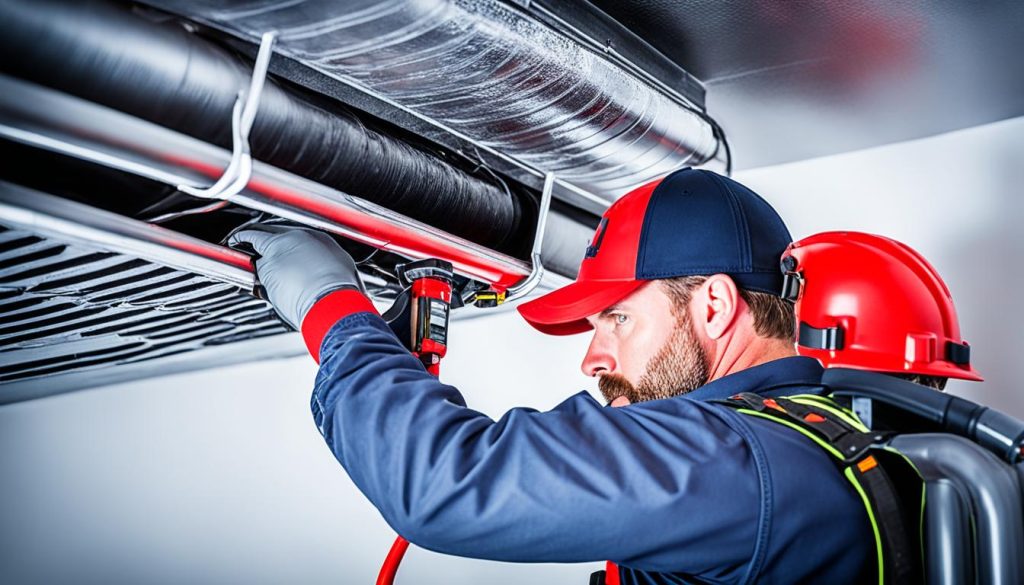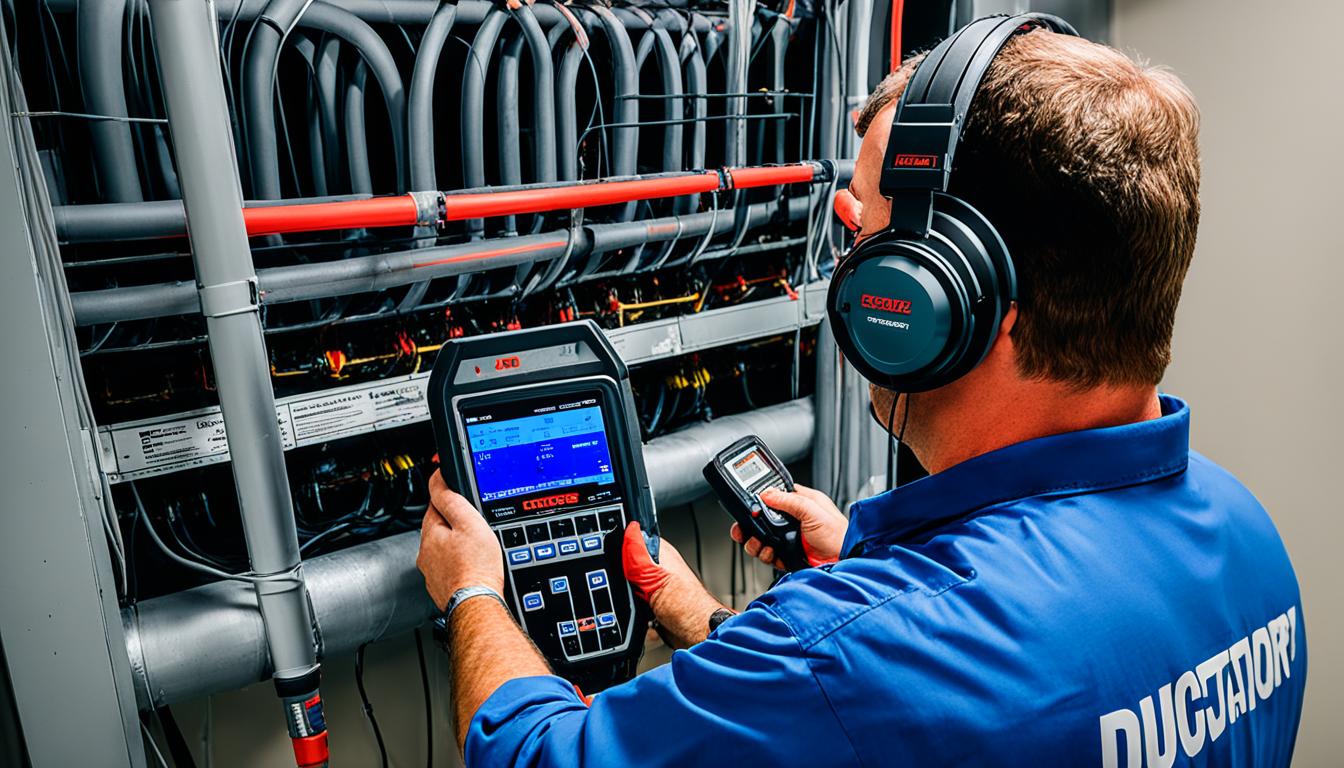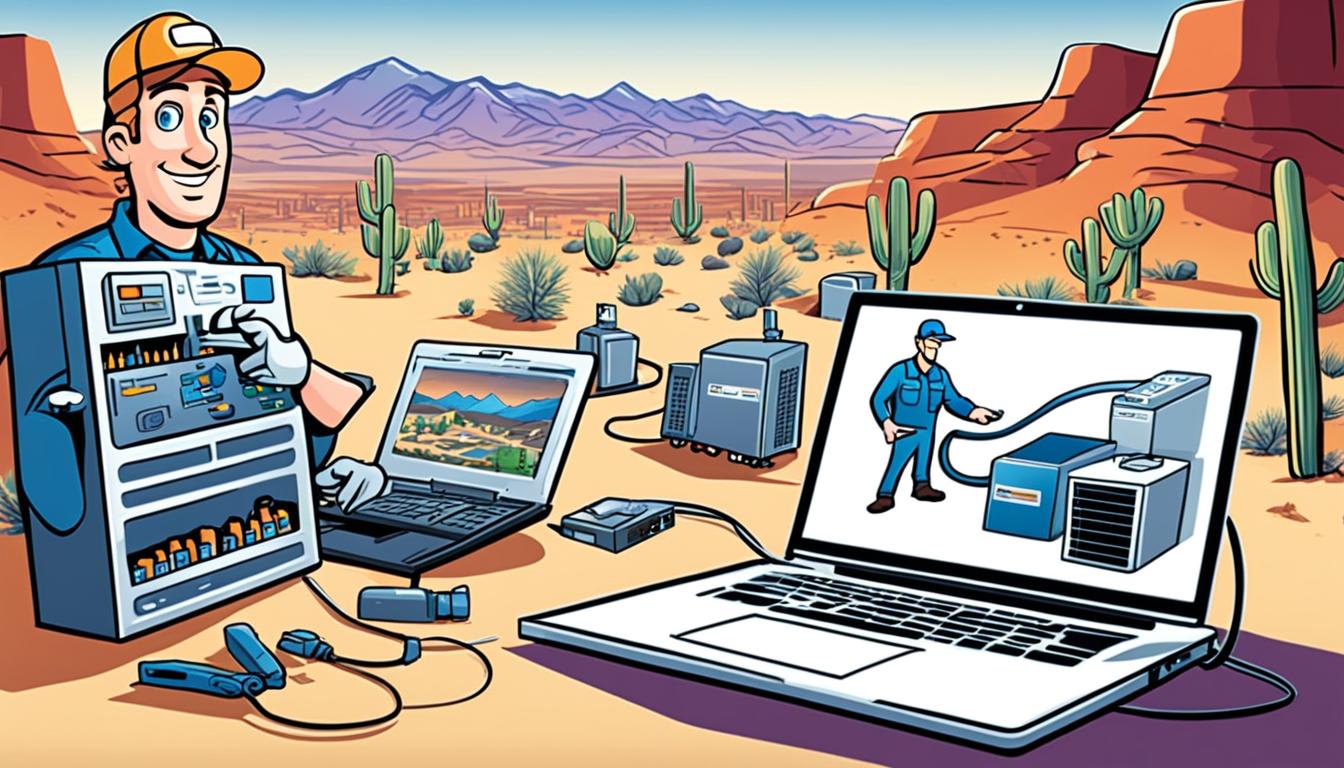Like most homeowners, I always strive to create a comfortable living environment for my family. However, despite my best efforts, I noticed that some rooms were consistently hotter or colder than others. Not only was this uncomfortable, but it also resulted in sky-high utility bills that left me scratching my head.
Desperate for answers, I decided to investigate further. I stumbled upon an article that mentioned the potential impact of leaky ductwork on both energy efficiency and indoor air quality. Intrigued, I began my exploration, eager to uncover the truth lurking behind my walls and ceilings.
Armed with knowledge and determination, I embarked on a journey to find the elusive leaks in my ductwork. It was not an easy task, but I soon discovered the power of using leak detectors to identify these hidden culprits. With each detection, I felt closer to eliminating the energy drain that had been plaguing my home for years.
In this article, I want to share the lessons I learned from my personal experience with detecting ductwork leaks. Whether you’re a homeowner or a contractor, you’ll find valuable insights into leak detection methods, the tools needed for the job, and the benefits of using leak detectors for ductwork.
Are you ready to take control of your home’s energy efficiency and indoor comfort? Let’s dive in!
Key Takeaways:
- Leaky ductwork can result in temperature discrepancies, high utility bills, and compromised indoor air quality.
- Inspecting ducts in exposed areas and conducting a professional pressure test are essential steps in identifying hidden leaks.
- Duct leaks can be repaired using DIY methods for small leaks, but extensive leaks may require the expertise of an HVAC professional.
- Regular maintenance, air balancing, duct cleaning, insulation, and equipment modifications are additional strategies to consider for optimal efficiency.
- Proper duct maintenance and repair are crucial for preventing energy wastage and ensuring continuous comfort.
Methods of Duct Leak Testing
Duct leak testing is a critical step in assessing the integrity and efficiency of HVAC ductwork systems. With the potential for energy wastage and compromised indoor air quality, it’s essential to employ effective leak detection techniques. Here are some best practices for ductwork leak detection:
1. Pressure Testing:
One commonly used method is pressure testing, which involves pressurizing or depressurizing the duct system using a blower door or a duct blaster. By monitoring changes in pressure, contractors can identify leaks and pinpoint their locations. This technique is particularly effective for detecting hidden leaks that may not be visible during visual inspection.
2. Smoke Testing:
Another technique is smoke testing, which utilizes artificial smoke to visually reveal leaks in the ductwork. The smoke is introduced into the system, and any escaping smoke indicates the presence of a leak. This method is particularly useful for identifying leaks in hard-to-reach or concealed areas.
3. Ultrasonic Testing:
Advanced leak detection technology for ductwork includes ultrasonic testing. This method involves using specialized equipment to detect high-frequency sounds emitted by escaping air. By analyzing these sounds, technicians can pinpoint the precise locations of leaks, even if they are quiet or small. Ultrasonic testing is highly accurate and efficient.
4. Chemical Testing:
Chemical testing involves injecting sealants into the ducts. These sealants solidify at leak points, effectively sealing the leaks. This technique can be useful for repairing small leaks in the ductwork. However, it is essential to ensure that the sealant used is compatible with the duct material and does not pose any health or environmental risks.
The choice of testing method depends on factors such as the size of the system, accessibility, and desired accuracy. To ensure accurate and effective ductwork leak detection, it is crucial to prepare adequately, execute the tests diligently, and take appropriate post-test actions. Adhering to best practices for ductwork leak detection can help contractors identify and repair leaks promptly, leading to improved system efficiency and indoor air quality.
| Leak Detection Method | Advantages | Limitations |
|---|---|---|
| Pressure Testing | Effective for hidden leaks | May require specialized equipment |
| Smoke Testing | Visually reveals leaks | May not be suitable for all systems |
| Ultrasonic Testing | Highly accurate for pinpointing leaks | Requires specialized equipment and training |
| Chemical Testing | Useful for repairing small leaks | Compatibility and environmental considerations |
Section 3
Tools for Detecting HVAC Leaks

When it comes to detecting HVAC leaks in air conditioning systems, HVAC technicians rely on a variety of tools to get the job done effectively. These tools help identify and locate leaks, allowing technicians to promptly address them, prevent system damage, and ensure optimal performance. Let’s explore some of the essential tools used for detecting HVAC leaks:
Senses of the Technician
As experienced professionals, technicians understand the value of using their own senses to detect potential HVAC leaks. They listen for hissing sounds, which can indicate leaks in the system. Additionally, technicians rely on their sense of smell to detect coolant leaks, as certain refrigerants have a distinct odor.
Leak Detecting Liquids
Another tool in the technician’s arsenal is leak detecting liquids. These liquids are sprayed onto HVAC system parts, such as connections and joints. When a leak is present, the liquid bubbles up, providing a clear visual indication of the leak’s location. This method is particularly useful for identifying small leaks in hard-to-reach areas.
Ultrasonic Leak Detectors
Ultrasonic leak detectors are highly sensitive tools that can detect HVAC leaks even at a distance. These detectors operate by “listening” for the sound of escaping gas, such as refrigerant or compressed air. When a leak is detected, the device provides a visual display that pinpoints the precise location of the leak. Ultrasonic detectors are especially effective for identifying small and quiet leaks that may go unnoticed by other methods.
By utilizing these tools, HVAC technicians can accurately detect and locate leaks in air conditioning systems. This allows them to address the issues promptly, preventing further damage to the system and ensuring optimal performance. Regular leak detection and repair are vital for maintaining energy efficiency and prolonging the lifespan of HVAC systems.
Importance of Duct Maintenance and Repair
Proper duct maintenance and repair play a critical role in ensuring the efficient operation of HVAC systems. Leaking ducts can lead to energy wastage, increased utility bills, uneven heating or cooling, and potential indoor air quality issues. Addressing these leaks promptly is essential for maintaining a comfortable and healthy indoor environment.
Visual Inspection and Pressure Testing
Professional HVAC service providers employ various methods to detect and address duct leaks. Visual inspection involves examining ducts for visible signs of damage or leaks, such as loose connections or holes. Pressure testing is another common technique that pressurizes the duct system to identify any leaks through changes in pressure. These methods help identify leaks and determine the most appropriate repair strategies.
Duct Sealing Techniques
Once leaks are identified, proper duct sealing techniques are employed to effectively address the issues. HVAC technicians may use mastic sealant or metal foil tape to seal small leaks. For more extensive leaks, duct sealing may require professional expertise, as it involves accessing and repairing the damaged sections. Properly sealed ducts not only prevent energy loss but also enhance overall system performance and indoor comfort.
Regular maintenance and prompt repair of ductwork are essential for preventing leaks and maintaining optimal HVAC system performance. By addressing leaks promptly, homeowners can avoid costly repairs and ensure energy-efficient operation. It is recommended to schedule regular maintenance with licensed HVAC service providers to detect and address any signs of duct leaks.
Importance of Duct Maintenance and Repair
Proper duct maintenance and repair are crucial for preventing leaks and maximizing the performance of your HVAC system. Leaky ducts not only waste energy but also result in increased utility bills, inconsistent room temperatures, and potential indoor air quality issues. Regular maintenance performed by licensed HVAC service providers plays a vital role in detecting and repairing any leaks within the system.
Technicians employ various methods such as visual inspection, pressure testing, and specialized duct sealing techniques to effectively address leaks. By promptly addressing leaks, you can prevent further damage to your HVAC system while ensuring continuous comfort and energy efficiency in your home or business.
To avoid costly repairs and system inefficiencies, it is essential for homeowners to be proactive. Schedule regular maintenance with HVAC professionals and promptly address any signs of duct leaks such as strange noises, visible damage, or inconsistent airflow. By taking these preventive measures, you can maintain optimal HVAC system performance, extend the lifespan of your equipment, and enjoy energy savings in the long run.





0 Comments